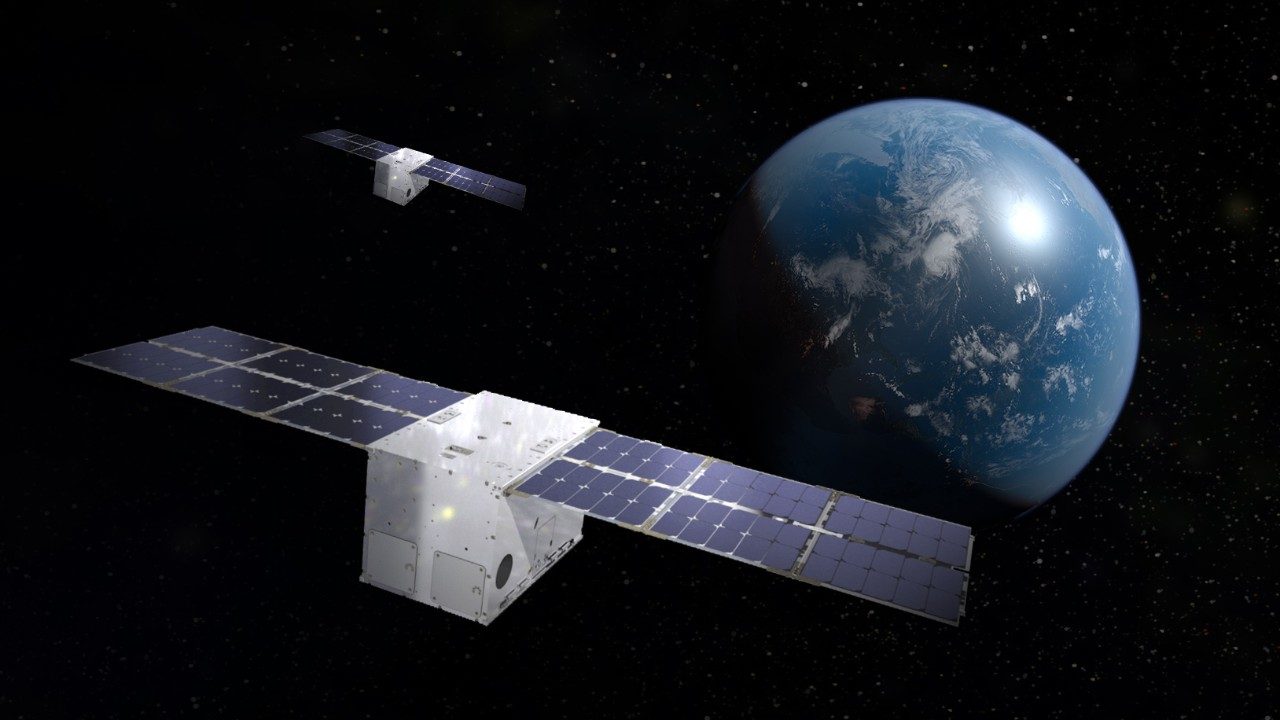To Jamie Landers, space exploration isn’t just about the continuing trajectory of science off-planet, it is a fresh start, an opportunity, led by innovation and imagination, to assess how technologies being developed today for new space-based business models can also be applied to serve the future of humanity on Earth.
“The further away we get from Earth, the closer we get to solving some of our most difficult challenges,” Jamie says. “When I look at space, I see nothing but hope and opportunity. Space is and has always been an expansive frontier where we can learn more about ourselves.”
Lockheed Martin is building on that vision by pioneering powerful capabilities for its customers and humankind which will open a new space economy and spur a “virtuous cycle of innovation” that benefits everyone, no matter where in the universe they reside.
Building Off-Earth Infrastructure and Supporting Space Sustainability
“There is a lot of opportunity for us to start building the architecture of the future,” Jamie says, “where we have a population of humanity that is living and working off-Earth and not dependent or tied back to the resources that we have here.”
That infrastructure starts with the smart – and really small – satellites Lockheed Martin is developing to enable on-orbit refueling, servicing, and assembly.

The Lockheed Martin In-space Upgrade Satellite System (LINUSS) mission, which comprises a pair of LM 50™ 12U Cube satellites, each the size of a large toaster, has a small but mighty role in space’s future. By demonstrating how CubeSats can upgrade spacecraft in orbit, LINUSS is paving the way for future in-space servicing missions and greater mission capability and flexibility.
LINUSS will partner with the Augmentation System Port Interface (ASPIN), another innovation developed by Lockheed Martin to solve the thorny problem of how to refuel in space. Designed to accommodate refueling interfaces, the ASPIN docking adapter also enables hardware and instrument upgrades in orbit.
“It’s a good beginning,” Jamie says. “These are hard problems we’ve been working on for years. Now you are seeing us leverage that investment, understanding, and technology prowess into new market creation and opportunity.”
But along with opportunity comes urgency. Be it cislunar, between Earth and Moon, or all the way out to Mars, the new space economy depends on nurturing a sustainable space environment.
“Space sustainability must be acted on now,” Jamie says. “Space is not only contested, it’s rapidly becoming more cluttered. The ability to augment, upgrade, repair, refuel, reuse, and relocate spacecraft and the programs they support is of the utmost importance.”
Data Infrastructure: Defense, Climate Adaptability, and Weather Modeling
By connecting and protecting everything from warfighters to farmers to newly developed “Smart Cities,” data infrastructure underpins all aspects of safe, sustainable life off-Earth.
“It is all about the data,” Jamie emphasizes. “How do you get data from one place to the next? How do you make sure it is secure? How are you protecting your infrastructure -- on and off the Earth -- and how are we using our data to better model our systems and architecture – hardware or software? How do you get to the place where it is actionable, intelligent information at speed?”
Lockheed Martin is leading in providing digital transformation tools like artificial intelligence (AI) to help the warfighter perform more efficiently, digital twins that proactively marshal data to support any mission, and data links that could provide real-time video feeds (think: live coverage of humans landing on Mars). Taken together, they support Lockheed Martin’s development of a powerful digital thread that will connect capabilities and enable the rapid gathering, transport, and dissemination of critical data. That data will be essential to guide humanity as, step by step, these systems begin to blur, and eventually erase, the Kármán Line, the dramatic demarcation between humankind’s Earth and space-based endeavors.
It’s a development that will help keep us safer in space and push the boundaries of human space exploration, but also hit much closer to home.
“We are solving how we use data and AI, along with space sensor information, to provide more accurate and predictable modelling of what is happening with our climate and use that information to adapt our infrastructure,” Jamie says.
“Food insecurity is a big problem here on Earth,” Jamie says. “Space-based science can support our farmers around the world by delivering more accurate predictions so they aren’t facing their worst days, so they can feed the world, whether that world is Earth-based or space-based.”
Virtuous Cycle of Innovation and Solving Food Scarcity

As interesting as, say, growing peppers on orbit to make space tacos may be, these experiments are just the low-hanging fruit. The real challenge is continuing advancements in underlying infrastructures such as consistent power and data availability, decision-making algorithms that support agricultural science, and Earth-based “Smart Cities” that will provide innovative, sustainable methods of food development and distribution to address the climate, health, and food scarcity issues.
“This is where the vision gets very exciting to me,” Jamie says. “As we push further into deep space, we are learning and sharing those lessons back here so we can create a worldwide society that supports each other in our scientific and personal endeavors and will help address and solve our biological, medical, and nutrition needs.”
“Populations of people will live, work, and learn together off-Earth. We will bring that learning down here to solve some of the hardest problems we have on our planet. We’ll create sustainable habitats and leverage that science to develop areas to live and work that support a viable economy.”
From refueling stations on orbit, to growing food on Mars and the Moon, the future is loaded with opportunity. But the key, to Jamie, is cooperation. And that’s where Babe Ruth comes into play. “The way the team plays determines success,” she says, quoting one of baseball’s all-time greats. “Outer space” she adds, “is our field of dreams.”
Will there be baseball in space? We’ll have to wait and see. One thing Jamie knows for certain, however, is the more we connect Earth and space, the brighter the future becomes.
“Space,” she says, “is for the benefit of all humanity”
“Space isn’t the final frontier, it’s just the next one, and it’s happening on our watch. It’s our responsibility to ensure we sustainably develop it in such a way that it benefits everyone, from the brave explorers who will go back to the Moon, to Mars and beyond, to those of us back home supporting them.”
Looking to learn more about how Lockheed Martin is leveraging space-based innovations to help our Earth? Tune into Lockheed Martin Space Makers, available everywhere you listen to podcasts.




